Little Bit of CreativeTruth on Growing Apples from Seeds [Bonsai]
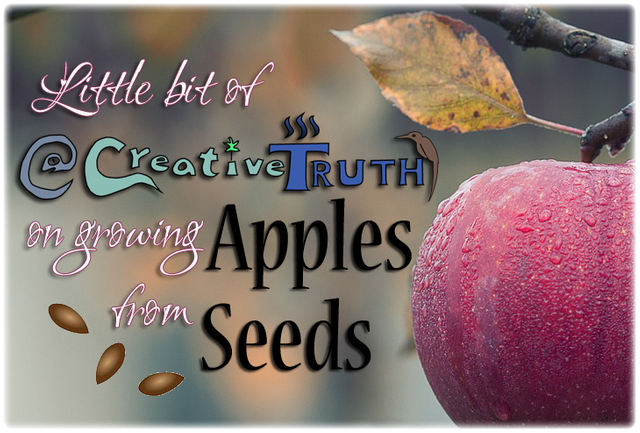
Ever wanted to grow apples from seeds? Let me show you!
The legendary Johnny Appleseed decided once to plant apple seeds across the entire Appalachian frontier lands, and his love for this delicious fruit has spread far and wide into the hearts and homes of nearly every homestead farm. I like to believe I have a bit of Johnny Appleseed mingled in my blood too, because I've been wanting to grow apples ever since I was a kid. Thirty years later, as an adult, I am now ready to start learning the magic behind how it all works.
Follow me along as I show you some of the wonderful discoveries I have made on my journey to grow apples from seed.
Image Credit: Cover photo background is adapted from pixabay. View the original photo here.
Let's Get Started
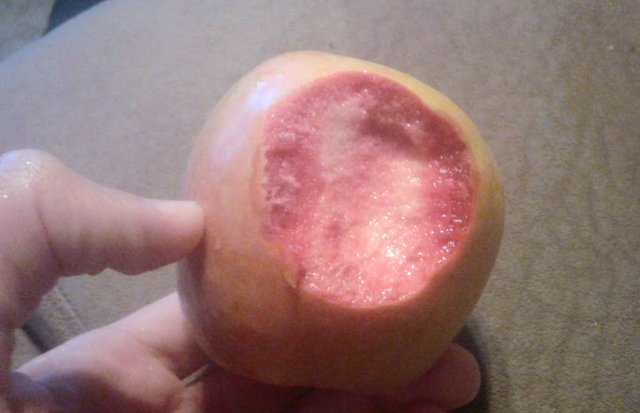
Find an apple in the produce section. Pick whatever interests you. Maybe you like the flavor, the color, the crispness, the sweetness, the tartness, the size, the shape, or how well it cooks in a pie.
The variety I chose is called Lucy Glo, and it has a purdy surprise inside. Underneath the yellow-green apple-peel is a strawberry tinted flesh. The flesh is half-white and half fuchsia-red. I bought it in late November of 2018, ate the entire deliciously sweet apple, and saved the seeds.
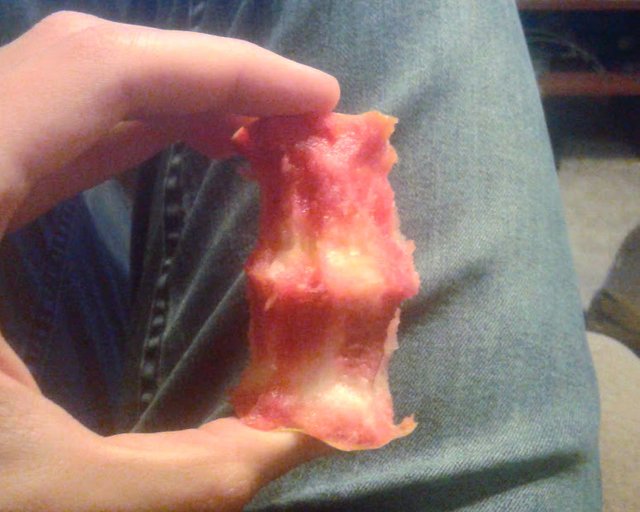
After rinsing off the seeds, I researched online how other people grow the seeds. Apple seeds need to stratify, which means they have to be kept cold before they will germinate.
What I did was put them in a small plastic container. To prevent the seeds from drying, I added a few sprinkles of water. No napkins or paper towels. I think tissue paper is often a nest for mold to form. Too much water and the seeds will rot. It needs to be just barely enough for the container to form misty droplets on the container walls.
When finished, I put the little container with the seeds and the water inside a small plastic ziplock bag, and inside the bag I added a label to show the name of the apple it came from along with the date the seeds were started. The whole thing went into the bottom of my refrigerator, inside the crisper drawer, where the temperature stays slightly above freezing levels.
Then the hard part began... waiting!
From Apples to Apples
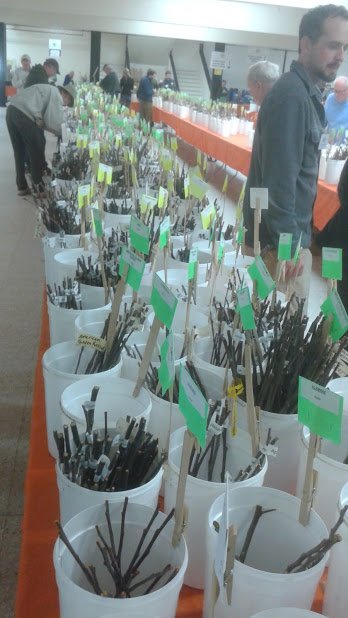
One thing not every nobody knows is that an apple grown from seed will definitely not have the exact same characteristics as the fruit it came from. Apples are like people. Mom and Dad make babies, and those kids might grow up to look more like Mom, more like Dad, a bit of both, or neither of them. Certain traits are almost guaranteed to be passed down to the next generation, but other traits are a total wildcard gamble if they will appear in the next crop or not.
Furthermore, we can never be certain where the bees got their pollen from that was used to make the seed. The seed might have half the DNA of a crabapple tree grown nearby, or maybe from some unknown tree miles away. Whatever trees' pollen was used in making the seed is going to determine the DNA cocktail inside the seed. That seed will always make an entirely new apple variety that has never existed before.
More commonly, people want to grow apple trees that are guarenteed to have the exact same delicious fruit varieties we love. To do this, we do not grow it from seed.
If you want to get an exact clone of a specific type of apple, you have three options:
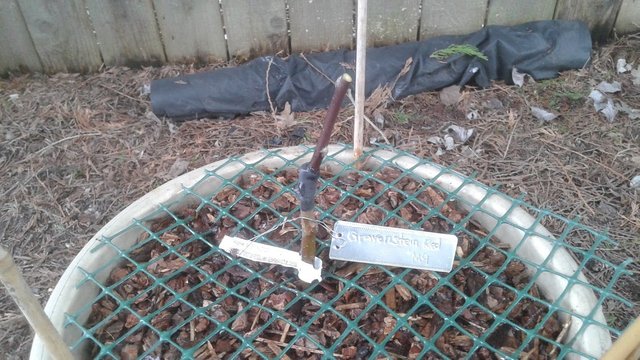
Option 1: Buy an established apple tree from a plant nursery with the type of fruit variety you want grafted onto it. This can be expensive depending on how old and rare the tree is. It can also be a risk, because growing an established apple tree is hard! It might grow too big, not produce fruit, or die for various reasons. Ask the nursery staff how to plant it and what sort of routine maintenance will keep it in good health.
Option 2: Graft your own tree. Find out when your city hosts a propagation fair or fruit-grafting festival. They will have expert orchard growers available to help you graft your first tree. At this event you can choose from various types of apple wood to graft onto a healthy rootstock. They will also have books available to help you take good care of your tree. Tools for grafting trees will also be for sale. This is much cheaper than buying a tree from a nursery.
Option 3: Forget about growing a tree. Support your favorite produce suppliers, and enjoy eating the delicious fruit they grow for you. Orchard-grown fruit will probably supply more abundant, healthier fruit than you can grow on your own. However, apples shipped from orchards are often sprayed with pesticides and coated with an invisible layer of edible wax. Some of it comes off when washed off and rubbed, but not completely.
Now that you know the truth, perhaps you may still be thinking, "Screw that! I just want to grow apples from seeds." Yes my friend, you can!
Allow me to show you how I did precisely that.
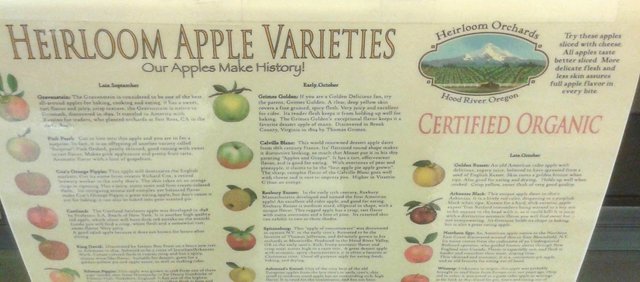
Stay tuned. At the end of this article I'll show you some of the interesting apples in detail displayed on this Heirloom Apple Varieties list pictured above. There are thousands of apples that can be grafted and grown at home, but I think this is a good list of rare ones that were historically very popular.
What About the Seeds?
What about them? Oh yeah! Almost forgot about them.
After many months in the fridge, nothing was happening. I would check them once every two weeks or so, and they always looked unchanged. Every month or so, I would give the seeds a gentle rinse, shake them up a bit to slosh off any contamination. I never found any signs of mold by routinely cleaning the seeds with fresh water in this way.
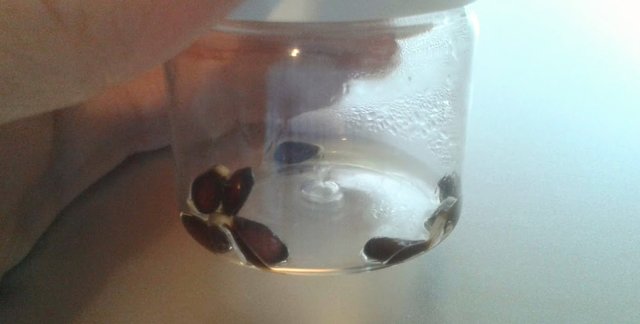
Finally, in early March, the seeds actually sprouted. Thick white roots emerged. As soon as I noticed they sprouted roots, I gently cleaned them one last time by sloshing in some fresh water, and I put the container of seeds back into the fridge for a couple more days.
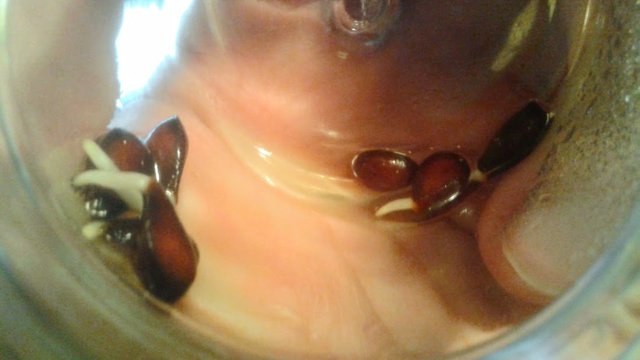
Nearly every seed had formed roots by the end of the week.
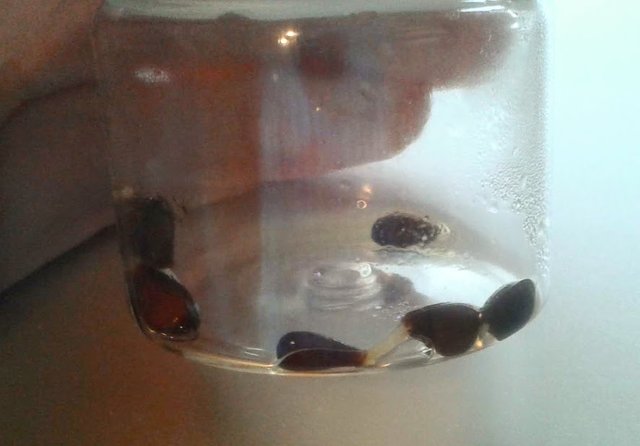
Now that the roots are forming, I wanted to give them something to start grabbing onto. Roots do not like bright sunlight. I have also learned that apple roots will rot very easy if kept in standing water or soil that is too wet.
So I grabbed a handful of my favorite growing medium. Yep, my bonsai friends will know the answer.
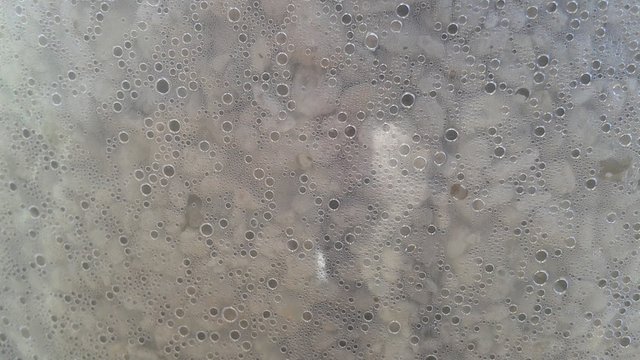
Add Pumice
These little white lava rocks are incredible. They drain freely and they also hold in humidity like a magnet inside a pot. Water vapor evaporates quickly, so I'll be using some plastic to help trap the humidity.
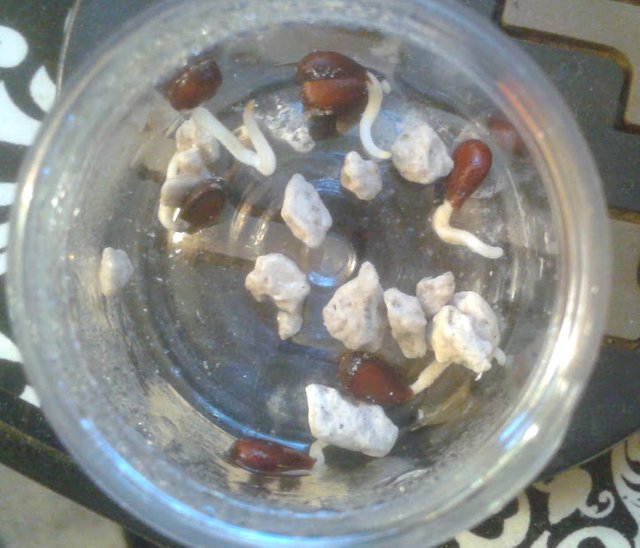
Humid air, as I learned from @steamdan is the main thing a plant needs to start growing, because it ensures every surface of the roots, stem, and leaves can stay hydrated and breath.
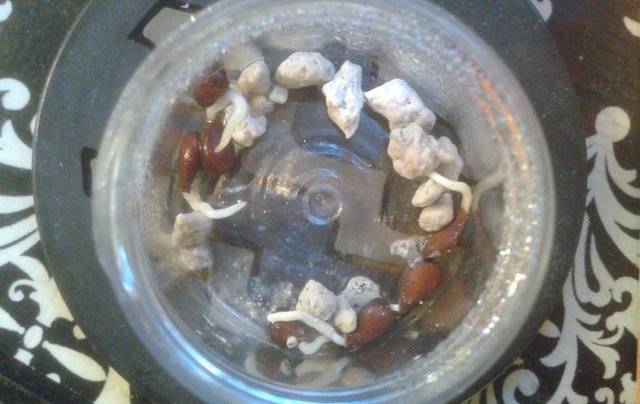
This little sprinkling of a few rocks and a few drops of water were added to keep the roots growing for a few more days inside this plastic container. This small sized container will continue to provide maximum moisture levels to the air inside. The white lid is removed for the camera and then it was replaced to keep the moisture inside from evaporating.
Now that the seeds have all sprouted, I decide to keep the container inside a dark pot to shield the seeds from light, and let them adjust to normal room temperatures. The warmer air will make it easier for the roots to grow. The seeds, I think, have all sprouted, and they are genetically designed to sprout when Spring temperatures warm up after the frozen season of Winter has ended.
Plant the Sprouts
After about a week of growth in a room temperatures environment, the roots were slowly continuing to grow longer. At this point I decided to plant them inside of pots.
Most of these trees will probably become bonsai trees, and I will probably only keep the ones I like best, and maybe give the others away if anyone wants them.
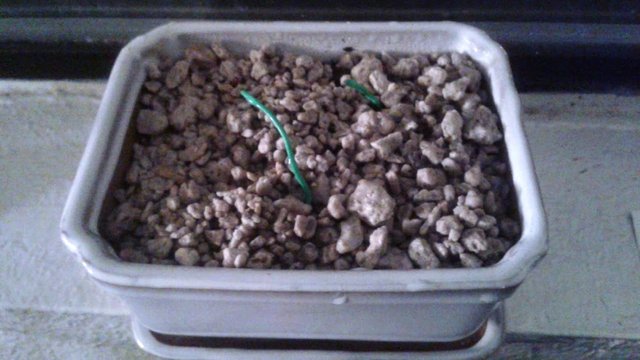
The wires, I admit are too short. In bonsai, wires are used for holding the root of the tree down against the pot so it does not fall out or tip over. I am not planning to twist this wire over the tender seedling, but eventually when the tree forms a tougher trunk, it will be useful to have the wire in place to hold the tree firmly inside. This will be ideal, because I can leave the seedling growing inside without having to repot it again in a year.
The soil is layered with pumice, covered with moistened coconut coir, and layered again with pumice. This lasagna layering gives the roots a soft bed to sit on, with various porous avenues to explore. In bonsai, we want the roots to spread out in all directions. Apple trees tend to form a single deep taproot, which will coil around the base of a pot if we are not careful. I think the pumice and the small pot size will help encourage the taproot to split into more rootlets when it reaches the large drainage holes underneath the pot.
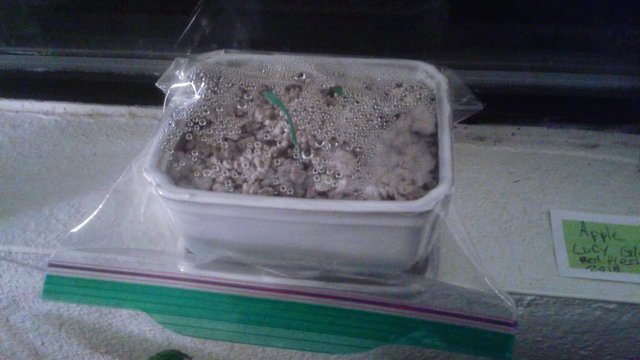
This little bonsai pot barely fits inside a ziplock bag, and it is sweltering with humidity. On the windowsill, the pot will be able to enjoy cycles of warm indoor temperatures, cool temperatures from the window at night, and the effects of sunlight from the very first day it sprouts leaves.
When the stem first begins to sprout, I will leave the plastic over it to hold the stem crushed against the soil surface. This will encourage a little bit of a curved sway in the base of the trunk. It might also force the taproot to bend into a lateral angle instead of heading straight down, or force it to redirect growth into new roots. All these things are good for small bonsai trees.
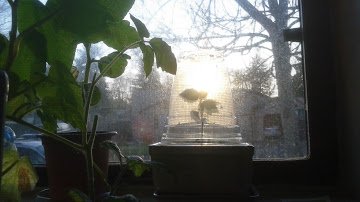
A few weeks later, I removed the plastic bag, and upgraded to a plastic cup to allow the stem some more space. It adapted very quickly to an upright shape, but still has a slight bend at the base.
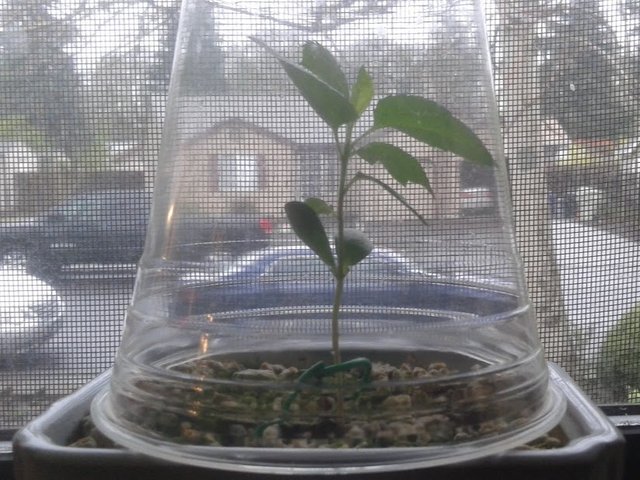
Outdoor Planting Methods
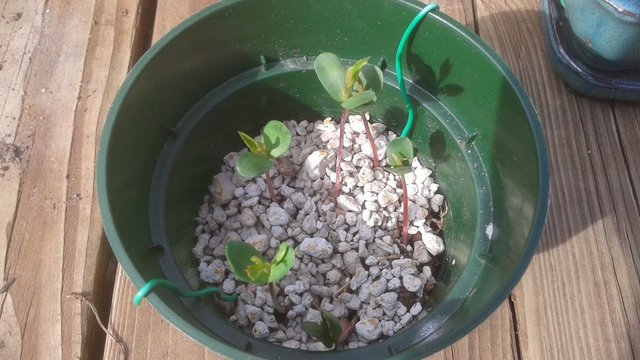
These seedlings had the same treatment of soil as my indoor tree, except these were moved outdoors to grow. Night temperatures are in the upper 30's, and daytime temperatures are in the 60's. A plastic bag wrapped around the pot was used to keep extra warmth and humidity inside until the stems started to emerge. When the seedlings became a few inches tall (happened in a only a few days), I removed the plastic bag and swapped it for a clear plastic lid to allow more fresh airflow.
They are doing great! Not one seedling has died. They don't need the protection of a plastic lid anymore. The climate is shifting daily between full sun, cloudy, and rainy, and these apple seedlings are perfectly adapted for this environment. Even the wildlife is leaving the baby trees alone.
I think I timed things just right. If I had left the seedlings trapped under the plastic barrier on warmer day, it would have steamed my trees, and caused them to feint. Personally, I'm still waiting for my steem to roast my account, and cause me to feint. Anyone else?
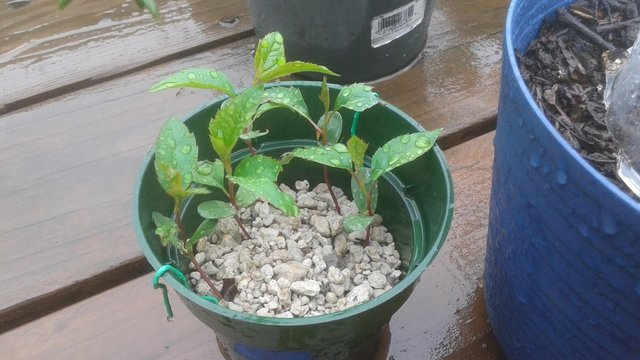
It is early April now, and the trees now have their second set of leaves. The stems are the same wonderful red color as the flesh of the apples they came from. I have heard tales of apples with red blossoms. These will be stunners indeed if I am able to exhibit them in full bloom some day.
There is one hidden enemy to my trees I have found. Some aphids are starting to creep up onto some of the apple seedlings and nibble on the leaves. Using soapy dishwater, I spray the infested trees every other day to make sure the bad bugs do not spread and feast on these tender apple leaves.
Extreme Planting Ideas
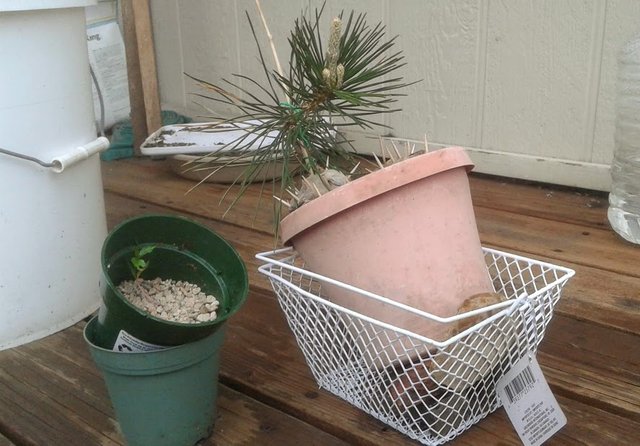
As I stated earlier, Apple trees have a tendency to grow very tall and upright in the early stages. To counteract this, we can trick the tree into growing at a steep angle by tilting the pot. In the photo above I use rocks to tilt the pot inside of another pot. Nearby the Japanese Black Pine is getting the same treatment to encourage the upright buds to extend into the desired angle.
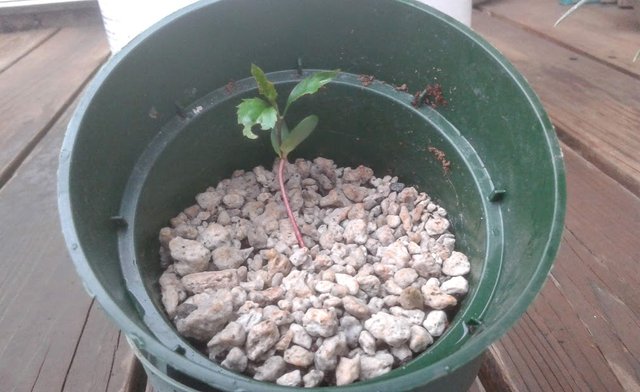
This little sprout was planted in a shallow soil depth, in a separate pot. When the stem grows, it will bump into the slanted rim of the pot. This will again force the trunk to bend into another angle as it searches for sunlight. The story of this tree will be written permanently within the shape it develops in the first few months of its life.
Additional Apple Varieties
Fortunately all apples provide seeds freely. If allowed to sprout, they can be planted, and become new trees with unknown new traits and characteristics.
The fruit we grow to eat, usually comes from wood grafts. I can actually grow my seed trees up, and graft wood from all other apple varieties onto them. In this way, I can enjoy fruits that will be an exact match to the variety they came from.
Hybrid apples are the more modern varieties that are popular among grocers, because they ship with less bruising, and they continue to taste good when kept on the shelf for a long time. However, Heirloom varieties have been historically grown for ages as an exact clone of the original parent seed tree, because they were extremely popular, disease resistant, and useful in various recipes. Check out this list below if you are interested in researching apples that can be grafted from heirloom varieties.
Click the photos above to view in fullscreen. I know the text is difficult to read.
Check the comments below for a text view of each one pictured. I will be adding comment updates here in a few moments. Some of these apples are #naturalmedicine, high in vitamin C and potassium. Apples are incredibly nutritious!
Conclusion
Yes, this was another lengthy article of mine. They always tend to be lengthy the way I write and take photos of everything I do. It's because I love to share with my steem friends, and I enjoy filling my portfolio with a permanent record of all my various learning experiences. This little project took many months for me to complete.
Thank you for checking out works. As you know, I am not a professional grower. These crazy experiments are how I learn and make my garden collection grow. Any time I can learn how to get somethings started for free, I like to jump in and give it a solid try.
Now that I can solidly say I can grow an apple from seed, there's no stopping what I can do tomorrow!
What will I name this apple? It's no longer a Lucy Glow, as the parent was, so I can name it anything I want.
The possibilities are endless.
Photos in this post are all #originalworks by @creativetruth, unless stated otherwise.
Find me on discord and chat with other tree growers, bonsai enthusiasts, and gardeners. We have quite a few accredited experts filling out our ranks, and a helpful Spanish-speaking community.
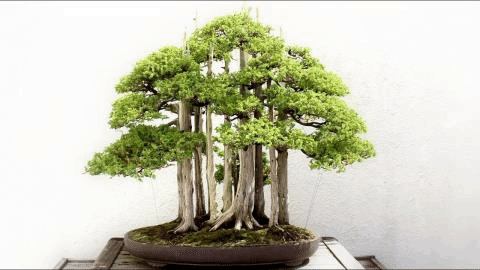
#naturalmedicine #homesteading #fruit-tree #fruit-trees #trees #apples #apple-tree #apple-trees #saplings #sapling #seed #seeds #seedling #seedlings #propagation #seed-starting #diy #how-to #learning #teaching #instructions

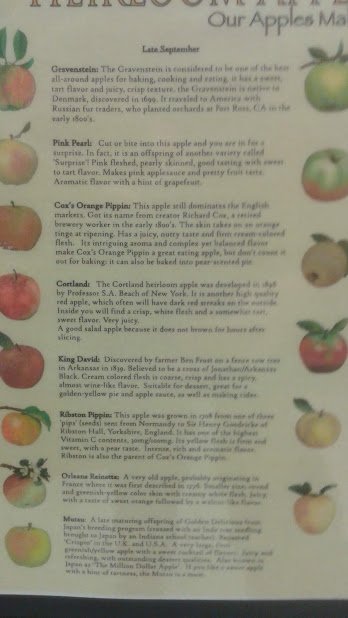
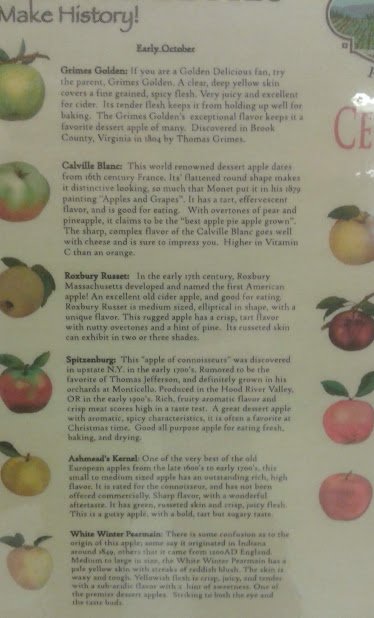
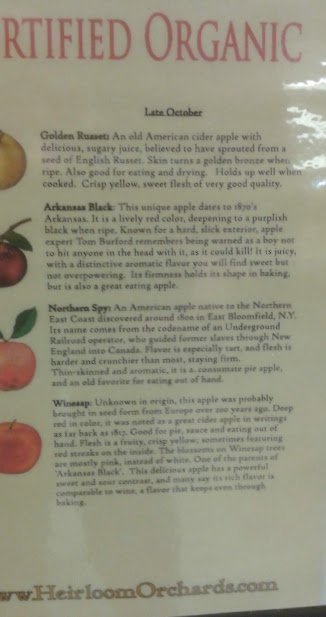
Graventein: The Gravenstein is considered one of the best all-around apples for baking, cooking, and eating. It has a sweet, tart flavor and juicy, crisp texture. The Gravenstein is native to Denmark, discovered in 1699. It traveled to America with Russian fur traders, who planted orchards at Fort Ross, CA in the early 1800's.
http://www.heirloomorchards.com/heirloom_apples.htm
ummmm wow bro....this post is mind and heart blowing!!!!!!!! thank you!!!!! just....WOW~
Thanks for the enthusiasm @rawutah. Just for you, here is another interesting tidbit I almost included...
The dark coating of the apple seed can be scraped off. It will germinate much faster, and you can skip the whole phase of waiting for months of keeping it in the cold fridge. Just pop it in a warm spot inside some plastic with some moisture, and it will germinate. However, I do not recommend this method, going against nature. It sort of resets its natural clock, and the seed will be forced to develop into a tree when the season is wrong. Trees grown out of season can develop various disease issues that may inhibit its development for the rest of its life.
Allow the seed to stratify in the normal way, without removing the outer coating, and the seed should germinate close to the same day that apple trees are ready to be grafted. I think this is no coincidence. It is nature's way of picking the right time to help the apple to start growing when the air and temperatures outside are best suited for the tree to start growing roots, limbs, and leaves. This time of year is when lots of natural rainfall occurs, sunlight is very gentle through the clouds, and temperatures are a bit too chilly for aphids and caterpillars.
fascinating bro! truly...johnny appleseed would smile at this!!!! golden information!!! thank you!!!
Cox's Orange Pippen: This apple still dominates the English markets. Got its name from creator Richard Cox, a retired brewery worker in the early 1800's. The skin takes on an orange tinge at ripening. Has a juicy, nutty taste and firm cream-colored flesh. Its intriguing aroma and complex yet balanced flavor make Cox's Orange Pippen a great eating apple, but don't count it out for baking: it can also be baked into a pear-scented pie.
http://www.heirloomorchards.com/heirloom_apples.htm
Cortland: The Cortland apple was developed in 1898 by Professor S.A. Beach of New York. It is another high quality red apple, which often will have dark red streaks on the outside. Inside you will find a crisp, white flesh and a somewhat tart, sweet flavor. Very juicy. A good salad apple because it does not brown for hours after slicing.
http://www.heirloomorchards.com/heirloom_apples.htm
Ribston Pippin: This apple was grown in 1708 from one of three 'pips' (seeds) sent from Normandy to Sir Henry Goodricke of Ribston Hall, Yorkshire, England. It has one of the highest Vitamin C contents, 30mg/100mg. Its yellow flesh is firm and sweet, with a pear taste. Intense, rich and aromatic flavor. Ribston is also the parent of Cox's Orange Pippin.
http://www.heirloomorchards.com/heirloom_apples.htm
Orleans Reinette: A very old apple, probably originating in France where it was first described in 1776. Smaller size; round and greenish-yellow color skin with creamy white flesh. Juicy, with a taste of sweet orange followed by a walnut-like flavor.
http://www.heirloomorchards.com/heirloom_apples.htm
Mutsu: A late maturing offspring of Golden Delicious from Japan’s breeding program (crossed with an Indo tree seedling brought to Japan by an Indiana school teacher). Renamed ‘Crispin’ in the U.K. and U.S.A. A very large, firm greenish/yellow apple with a sweet cocktail of flavors. Juicy and refreshing, with outstanding dessert qualities. Also known in Japan as ‘The Million Dollar Apple’. If you like a sweet apple with a hint of tartness, the Mastu is a must.
http://www.heirloomorchards.com/heirloom_apples.htm
Grimes Golden: If you are a Golden Delicious fan, try the parent, Grimes Golden. A clear, deep yellow skin covers a fine grained, spicy flesh. Very juicy and excellent for cider. Its tender flesh keeps it from holding up well for baking. The Grimes Golden's exceptional flavor keeps it a favorite dessert apple of many. Discovered in Brook County, Virginia in 1804 by Thomas Grimes.
http://www.heirloomorchards.com/heirloom_apples.htm
Calville Blanc: This world renowned dessert apple dates from 16th century France. Its flattened round shape makes it distinctive looking, so much that Monet put it in his 1879 painting “Apples and Grapes”. It has a tart, effervescent flavor, and is good for eating. With overtones of pear and pineapple, it claims to be the best "apple pie apple grown". The sharp, complex flavor of Calville Blanc goes well with cheese and is sure to impress you. Higher in Vitamin C than an orange.
http://www.heirloomorchards.com/heirloom_apples.htm
Roxbury Russet: In the early 17th century, Roxbury Massachusetts developed and named the first American apple! An excellent old cider apple, and good for eating. Roxbury Russet is medium sized, elliptical in shape, with unique flavor. This rugged apple has a crisp, tart flavor with nutty overtones and a hint of pine. Its russeted skin can exhibit in two or three shades.
http://www.heirloomorchards.com/heirloom_apples.htm